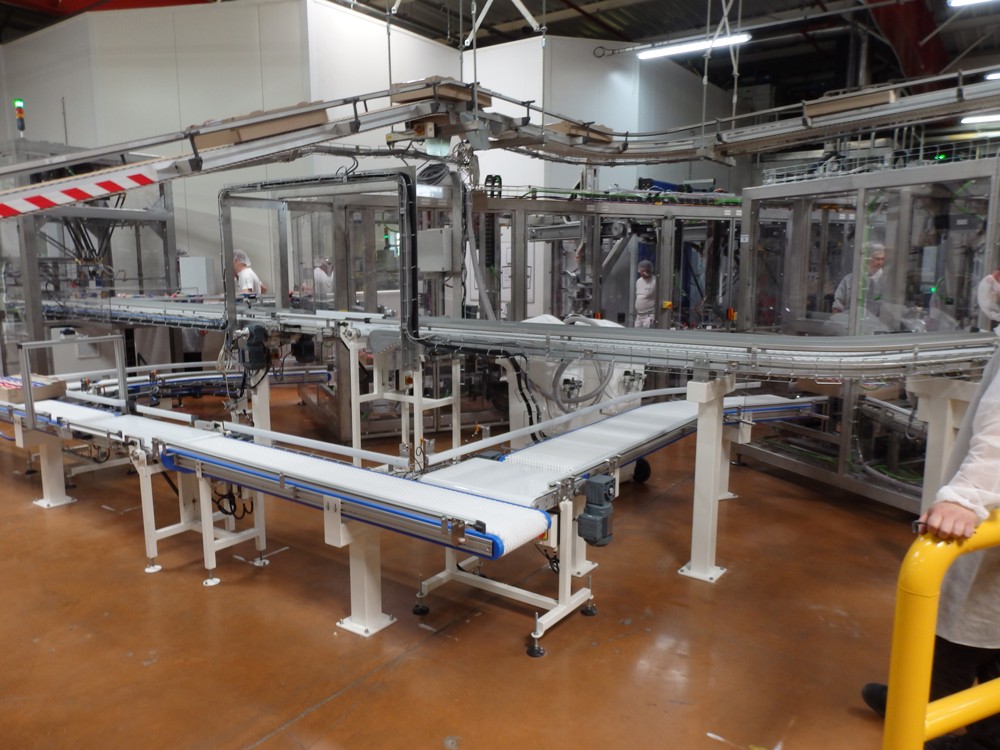Processing Company Expertise: Opening Efficiency in Manufacturing
Wiki Article
Efficient Industrial Recycling Solutions for Lasting Packaging: A Comprehensive Guide
In today's increasingly environmentally-conscious world, the demand for lasting product packaging solutions has never been higher. To satisfy this need, businesses across markets are actively looking for efficient industrial recycling remedies. Navigating the complex landscape of sustainable packaging can be challenging without an extensive guide. That's where this comprehensive guide on effective commercial recycling services for sustainable packaging can be found in. By discovering essential locations such as product packaging material choice, creating for recyclability, implementing reusing framework, teaming up with reusing companions, and tracking and measuring reusing success, this overview will certainly furnish you with the understanding and tools required to make informed choices and drive favorable modification within your organization. Whether you're a packaging specialist, sustainability supervisor, or just interested in the topic, this overview will offer valuable understandings and methods to assist you navigate the globe of lasting packaging.Packaging Product Choice
The selection of product packaging materials plays an important function in ensuring the sustainability of industrial reusing services. When it involves sustainable packaging, the choice of materials is type in lessening ecological influence and taking full advantage of reusing effectiveness. Picking the appropriate materials can help minimize waste generation, preserve resources, and promote a round economy.Products like cardboard, paper, glass, and specific types of plastics can be reused several times without shedding their high quality. On the other hand, products that are challenging to recycle, such as non-recyclable composites or combined plastics, can produce challenges for the reusing process and might finish up in incinerators or land fills.
An additional factor to consider is making use of sustainable and eco-friendly materials. Packaging made from renewable energies, such as plant-based plastics or biopolymers, can help in reducing reliance on fossil fuels and minimize climate adjustment. Additionally, naturally degradable products break down naturally with time, decreasing the buildup of waste in landfills.
Moreover, the weight and quantity of packaging materials need to be minimized to decrease transport prices and energy usage. Light-weight products not just require less sources during production yet likewise add to lower carbon exhausts throughout transport.
Designing for Recyclability
In order to make sure the recyclability of packaging products, thoughtful layout is vital. Designing for recyclability includes creating packaging that can be easily sorted, divided, and processed in recycling facilities. One important aspect of designing for recyclability is the option of materials. Packaging developers must focus on using products that are commonly accepted for recycling and have established recycling infrastructures. Materials such as glass, aluminum, and particular kinds of plastic, like pet dog and HDPE, are typically reused and must be favored over products that are costly or tough to recycle.One more important consideration in designing for recyclability is the removal of unneeded elements or products. By decreasing the variety of layers, finishings, and extra components, product packaging can be made less complex and less complicated to recycle. Additionally, designers should aim to lower the usage of combined materials, as they can make complex the recycling process.

Implementing Recycling Infrastructure
Reliable execution of recycling framework is essential for the success of industrial reusing services. Without correct infrastructure in position, the reusing process becomes inefficient and ineffective, impeding the overall goal of lasting packaging.To apply recycling framework efficiently, numerous key aspects require to be thought about. Firstly, there must be a well-organized collection system that promotes the separation and collection of recyclable products. This can include assigned recycling bins in public rooms, in addition to partnerships with waste monitoring business for curbside pickup and sorting.
As soon as accumulated, the recyclable products need to be carried to recycling facilities in a prompt way. This calls for reliable logistics and transport networks, making certain that the products get to the appropriate centers immediately.
At the recycling facilities, advanced sorting and processing innovations should remain in area to divide various kinds of products successfully. This consists of using automated arranging makers, optical scanners, and manual sorting techniques.
Additionally, there ought to be a robust market demand for recycled products. This can be attained via collaborations with makers and markets that utilize recycled materials in their production procedures. Developing a stable market for recycled products incentivizes the recycling market and promotes the a fantastic read circular economy.
Collaborating With Recycling Allies

One trick aspect of collaborating with reusing companions is the establishment of clear interaction channels. It is essential to develop open lines of communication to facilitate the exchange of details, updates, and comments. This allows both events to stay informed regarding the progress of this website reusing campaigns and attend to any challenges or issues that might develop.
Furthermore, partnership can involve joint initiatives in carrying out and creating recycling programs. Recycling companions can offer beneficial understandings and guidance in creating effective collection systems and figuring out the most proper recycling technologies. By interacting, companies and reusing partners can enhance the reusing process and reduce waste.
Furthermore, cooperation can prolong past the operational elements of reusing. It can also include campaigning for and education initiatives. By signing up with pressures, companies and reusing companions can increase awareness about the value of recycling and promote the fostering of sustainable packaging practices amongst customers and other stakeholders.
Tracking and Measuring Recycling Success
To make sure the effectiveness of industrial recycling options and the success of sustainable packaging goals, it is important for companies and their reusing companions to develop a comprehensive system for tracking and determining reusing success (processing company). Gauging and tracking reusing success permits businesses to evaluate the effect of their reusing initiatives, recognize locations for improvement, and set significant targets for future progressionOne way to track recycling success is through using information collection and analysis tools. By gathering information on the amount of product packaging waste created, the percentage of waste that is reused, and the kinds of materials being recycled, businesses can get important understandings into their reusing performance. This information can after that be evaluated to recognize fads, patterns, and areas of inadequacy.
One more crucial facet of tracking and gauging reusing success is developing standardized and clear metrics. This allows services to compare their efficiency against market benchmarks and check my reference track their progression in time. Metrics such as reusing rates, waste diversion rates, and greenhouse gas discharges can give a measurable action of a company's reusing success.

Verdict
Finally, applying reliable industrial recycling remedies for sustainable product packaging calls for cautious factor to consider of product packaging product option, developing for recyclability, carrying out recycling framework, working together with recycling companions, and tracking and measuring reusing success. By including these techniques, businesses can add to an extra environmentally-friendly and lasting strategy to product packaging, minimizing waste and promoting the round economic climate.By discovering crucial locations such as packaging product selection, creating for recyclability, implementing reusing framework, working together with reusing partners, and tracking and measuring reusing success, this overview will outfit you with the knowledge and devices necessary to make educated choices and drive positive adjustment within your company. Packaging developers need to prioritize the usage of products that are widely accepted for recycling and have actually established recycling facilities.Cooperation with recycling companions is vital for the effective implementation of industrial reusing solutions and the accomplishment of lasting product packaging goals. By joining pressures, businesses and recycling partners can elevate understanding concerning the relevance of reusing and promote the fostering of sustainable packaging techniques amongst consumers and various other stakeholders.
By accumulating information on the amount of packaging waste produced, the portion of waste that is recycled, and the types of products being recycled, services can gain important insights into their recycling performance.
Report this wiki page